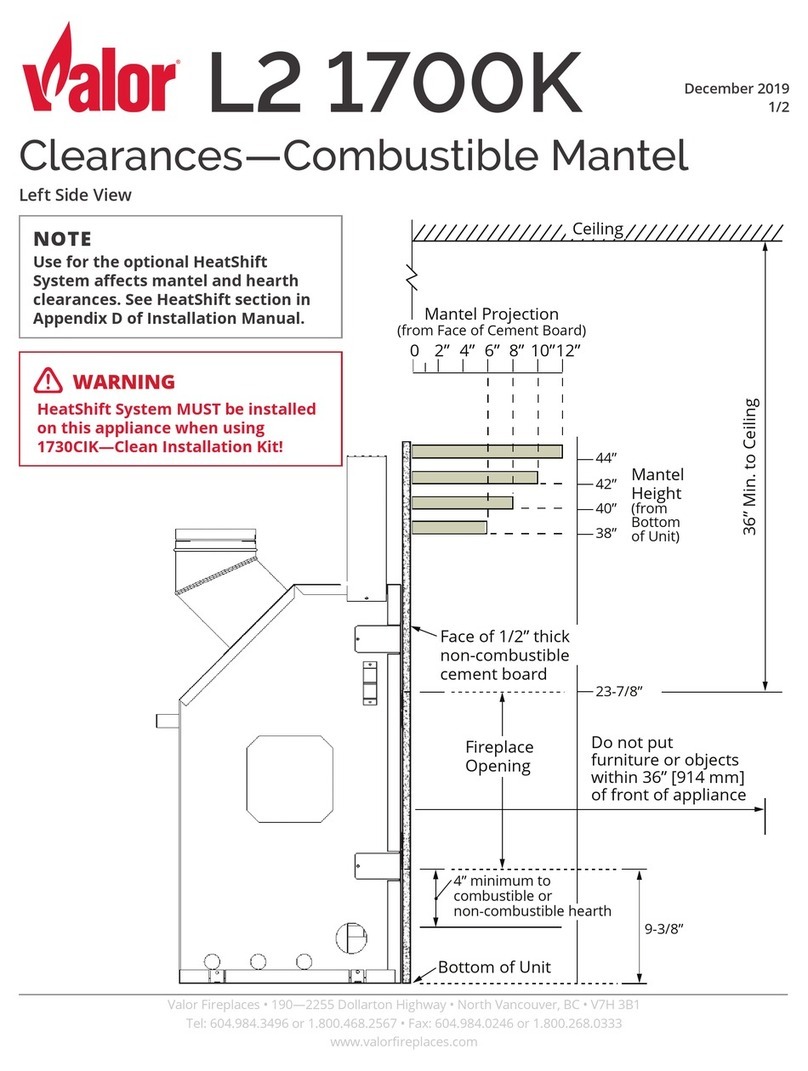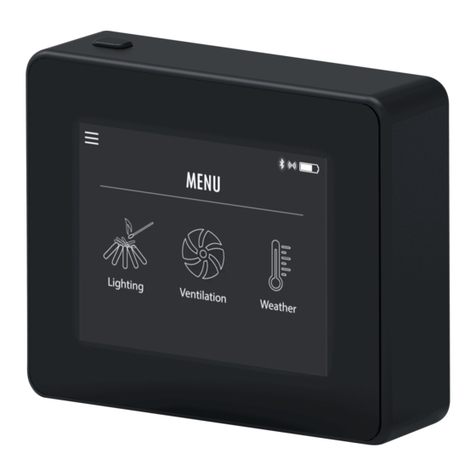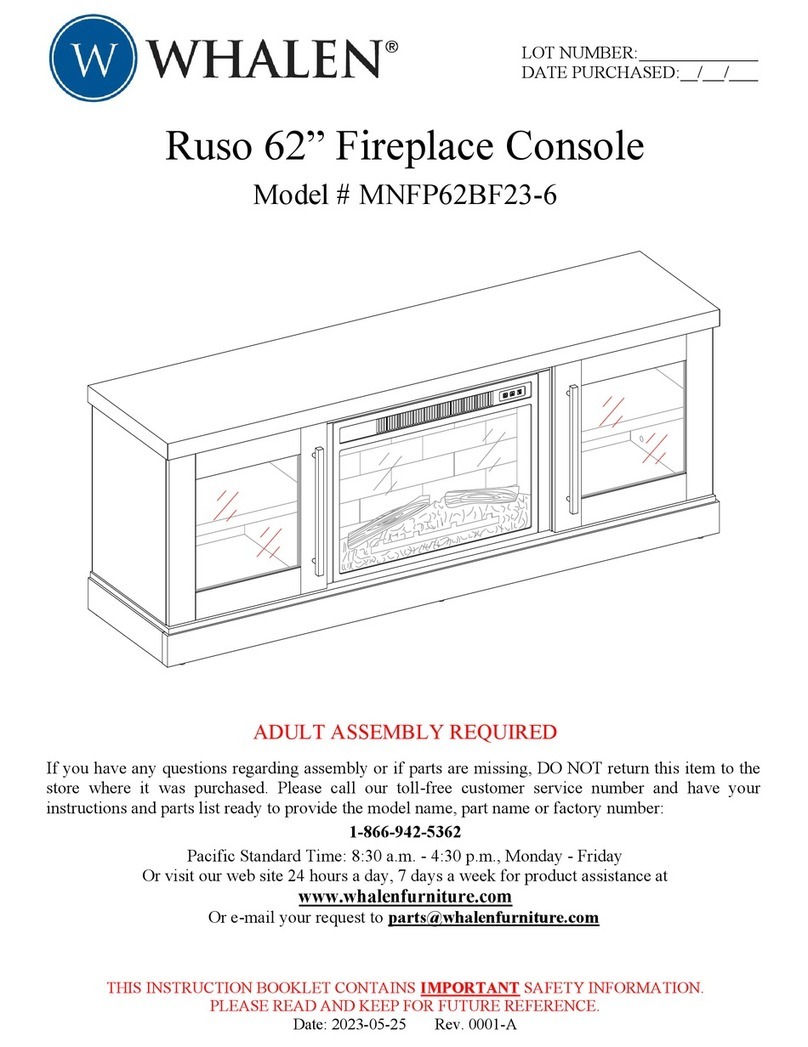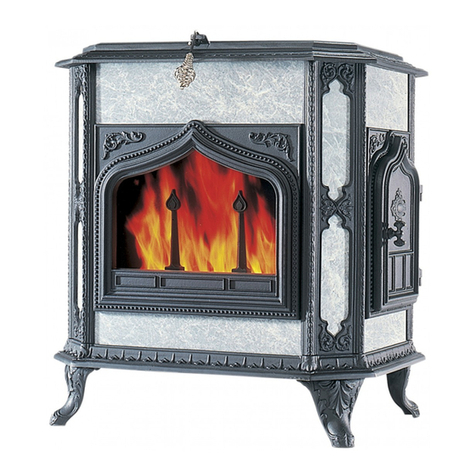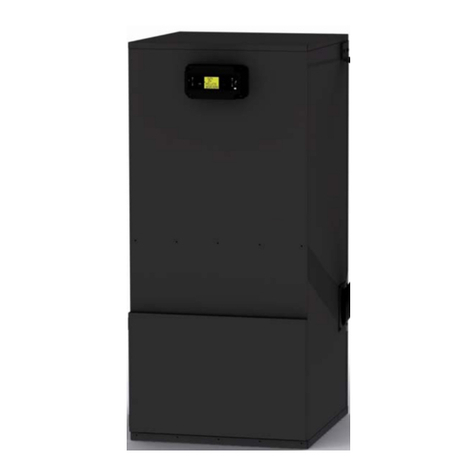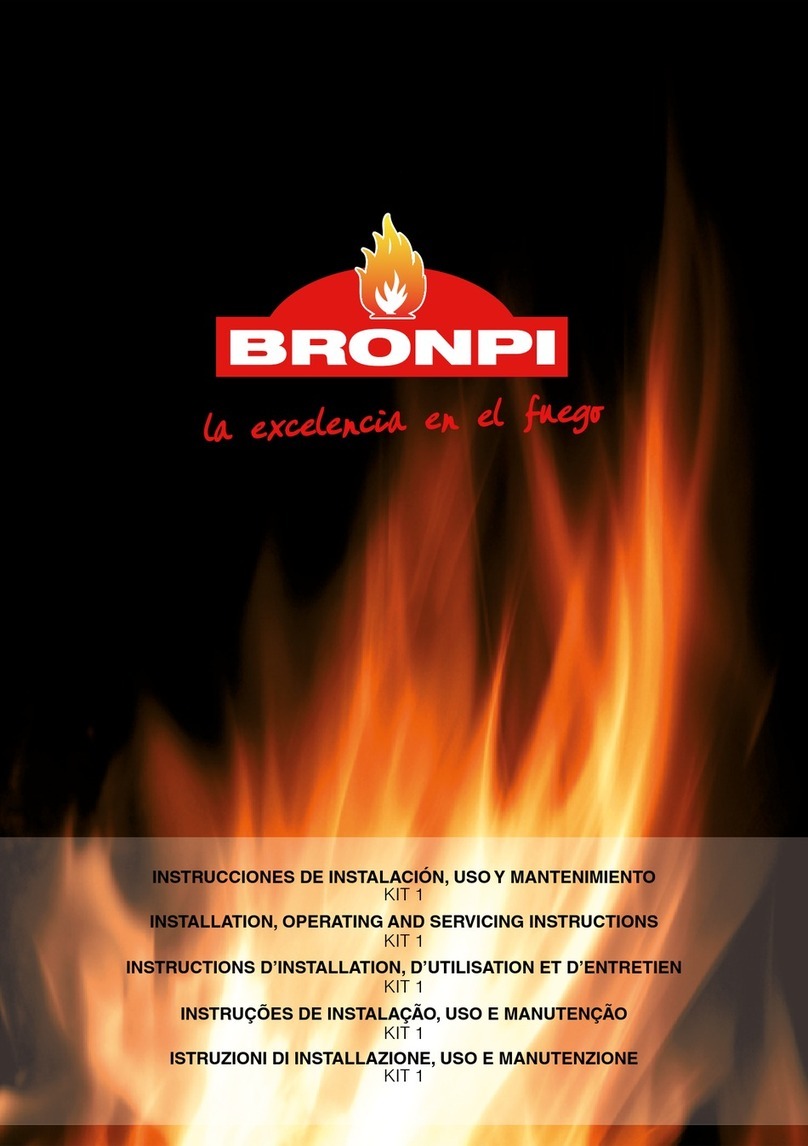Sit 501 EFD User manual

501 EFD
Electronic Flame
Failure Device
SIT Group

501 EFD
DESCRIPTION
FEATURES
SEQUENCE OF
OPERATIONS
TECHNICAL
DATA
INSTALLATION

DESCRIPTION
The 501 EFD automatic direct burner
ignition (DBI) unit has been designed for
atmospheric and fan assisted burners
which require non volatile lock-out.
This SIT Flame Failure Device is a solid
state controller based on the well known
and proven rectification effect of flame
ionization.
A suitable design and a special compo-
nents selection has allowed SIT to obtain
a wide temperature range from -20 to +
80 °C.
Applications
The 501 EFD provides automatic ignition
control with non volatile lock-out for
intermittent operation in accordance
with EN 298 for:
- Atmospheric burners
- Fan-assisted boilers,
including dynamic air check

FEATURES
Basic features include
- Compact design
- Remote, manual reset function
- Multiple plug-in connectors
- Well established electronic
technology for high reliability
- Atmospheric burner applications
- Trial for ignition after flame loss
- Permanent lock-out visualization, also
without thermostat input
- Wide range of operating ambient
temperature
Options available
- Contact for flame indication
relay from the power
supply line
- Fan output and air pressure
switch check
- Potted version
- Single electrode (for ignition
and flame detection)
- Different flame current
sensitivity
can be provided upon request
- Fast-on connectors
- Several pre-purge and safety
timings can be tailored to the
application

SEQUENCE
OF
OPERATIONS
Normal operation (atmo-
spheric or fan assisted)
During the waiting or purge
time, Tw or Tp, the circui-
try verifies that there is no
parasitic flame signal pre-
sent. If the unit is used in a
fan assisted application,
the air pressure switch is
verified to be in the N.C.
(normally closed) or “no
flow” position. Upon powe-
ring the fan, the unit will
not begin the operating
sequence until the N.O.
(normally open) or “flow”
position is activated on the
air pressure switch. After
the scheduled waiting time
Tw, or purge time Tp, the
built-in ignitor and the gas
valve are energized. This
commences the safety
time, Ts. The ignition spark
will ignite the gas and the
flame will be sensed by the
HV electrode (single probe
model) or the detection electrode (dual probe model). Upon sen-
sing the flame, the HV spark will be suppressed and the gas valve
will remain energized. On units with a flame relay, the flame detec-
ting connection will be powered when the flame is established. When
the thermostat is satisfied, the valve and fan are de-energized and
the control returns to the standby mode.
Behaviour under abnormal conditions
- if the air proving switch is in the N.O. (normally open) or “flow”
position at startup, upon a request for heat, the unit will remain in
a waiting mode with the fan de-energized
- if air flow is not proven by the airflow switch after energizing
the fan, the unit control will remain in the waiting mode with
the fan energized until the air flow is sensed
- upon flame failure during normal operation, the unit will maintain
the power to the fan and start again the ignition sequence with
a waiting time (or purge time) followed by a safety time
- if flame is not established and sensed during the beginning of Ts,
the spark will be suppressed shortly before the programmed end
of the safety time to permit the sensing of extremely weak
flames. This time is referred to as Tc (check time). If no flame is
sensed during any part of the safety time, the unit will lockout
Resetting the unit
To reset the unit the external reset switch is depressed. If a first
reset is not successful, wait at least 10 seconds before the next
attempt. Before starting, check if control is locked-out. If locked-
out, depress the reset button; After a manual reset an extended
pre-purge waiting time will occur.
TW TS TW
MV
HV
TC
TS
ATMOSPHERIC
D B I APPLICATION
FAN-ASSISTED
D B I APPLICATION
TC
TP TS TP TS
P
MV
HV

TECHNICAL
DATA
AMBIENT TEMPERATURE
-20 to + 80 °C
HUMIDITY
95% max at 40 °C
SUPPLY VOLTAGE
230 Vac -15%, +10%, 50-60 Hz
POWER CONSUMPTION
10 VA
ELECTRICAL RATINGS
valve output: 230 Vac, 0,5 A, cosf=0,6
fan output: 230 Vac, 0,5 A, cosf=0,6
flame relay output: 230 Vac, 0,5 A, cosf=0,6
alarm output: 230 Vac, 0,5 A, cosf=1
ELECTRICAL CONNECTIONS
high voltage probe: fast-on 2,8X0,5 mm
connectors: - STELVIO/STOCKO multiple plug-in connectors, or
- fast-on connectors 6,3 X 0,8 mm.
PROTECTION CLASS
IP 00 (fast-on)
IP 20 (connectors)
TIMING
minimum waiting time Tw: 1,5-3-5-7-10-30 sec.
minimum pre-purge time Tp: 1,5-3-5-7-10-30 sec.
maximum safety time Ts: 5-7-10 sec.
FLAME SENSING
minimum flame current: 0,5 µA
recommended flame current: > 1 µA
FUSING
internal: 2 A, non replaceable
external: 1,6 A fast. The 501 FFD should be
externally fused to proctet the unit
IGNITION
Integral electronic spark generator.
ignition voltage: 15 KV at 30 pF load
repetition rate: 15 Hz +/- 20%
max. lenght of the cable: 2 m.
spark gap recommended: 2-4 mm.
MOUNTING
No restriction for mounting position.
T1
T2
T3
T4
T5
T6
T7
T8
T9
T11
T12
Fast-on 6,3 x 0,8
Ø4,6
85
85
132
T13
T14
T15
T16
100
T10
37
42
HIGH VOLTAGE COIL
NN
230 VAC LINE
VAC NEUTRAL
GROUND
N
N
HV
BURNER ION
N
T1 T2 T4 T5 T6 T7 T8 T9 T10 T11 T12 T13 T14
T16 T15
T3
N
MV 2
P
MV 1
FL
HV
P
RS
230 VAC LINE
230 VAC NEUTRAL
GROUND
N
N
WIRING DIAGRAM
STELVIO/STOCKO plug-in connectors fast-on connectors

INSTALLATION
General Notes
Before installing the 501 EFD read and
follow the instructions carefully. Failure
to follow the instructions could cause
damage to the ignition module or the
appliance in which it is installed. Make
sure the ratings given in
the technical data match
the specifications of the
appliance.
The person installing or
replacing the ignition
module must be a trained,
experienced technician.
When the installation is
complete, make sure that
the ignition module operates properly in
accordance to the normal operating
sequence.
To ensure reliable long term operation,
mount the 501 EFD in a low ambient
temperature and low heat radiation
position in the appliance. High tempera-
tures could reduce product life.
For safety, connect a high limit ther-
mostat in series with the power supply
of the unit to de-energize the 501 EFD
in case of excessive temperatures. To
suppress radio frequency interference
the 501 EFD and spark electrode
cabling should be mounted in a shielded
environment.
Installation
The module should be mounted in such
a way that it is not subjected to exces-
sive heat, moisture, dust, grease or
oil. It also should not be subjected to
water or steam cleaning. The control
should be mounted and shielded in a
way that it will not get wet.
Excessive heat can damage the module
and shorten the operating life of the

control. For applications that operate
at high temperature, some insulation,
shielding and forced air circulation may
be necessary to keep the control ope-
rating properly.
Wiring
The module should be mounted close
enough to the burner to allow short
direct routing of the high voltage cable.
Use a suitable high voltage cable that
conforms to national standards such as
EN60335-1. The cable must not run in
continuous contact with a metal surfa-
ce or the spark voltage will be reduced.
The necessary connections between
the ignition control module and external
loads should be made using thermopla-
stic insulated wire with a minimum
rating of 105°C.
Disconnect power before making any
wiring connections to prevent electrical
shock or equipment damage.
Refer to the wiring diagram for detailed
information on the exact connectors.
The unit should be protected by an
external quick acting fuse of appropria-
te ratings to prevent problems due, for
example, to short circuit or faulty
loads.
Note that a common ground is requi-
red between the burner and the
ground terminal on the control module.
Only one wire must connect the modu-
le ground terminal to the appliance
common ground point.
The external loads and the burner
must be connected to the same com-
mon ground point.
High voltage and probe electrodes
should be mounted at the burner with
a spark gap set according to the elec-
trical specifications data.
Flame check
The minimum flame ionization current
is 0.5µA. For a stable flame detection
this current under normal conditions
should be higher than 1µA. To measu-
re the ionization current connect a DC
microammeter in series with the flame
detection probe.
If the flame current is insufficient,
check that the flame detection probe is
fully in the flame.
Note that the flame detection is affec-
ted by the polarity of the connection to
the main supply. For safety reasons,
the flame is detected only with the cor-
rect line polarity connected to the con-
trol. Otherwise the unit will go to
lockout at the end of the safety time,
even if the burner is lit.
With single probe unit, to check the
flame level measure the DC voltage
between the probe and the ground with
a flame present. Connect the positive
lead to the probe and the negative to
the ground. The voltage should be
greater (more negative) than -25V.
Note however that the input impedan-
ce of the suitable voltage meter must
be more than 100MΩ.

501 EFD

SIT La Precisa
Viale dell'Industria 31/33
35129 PADOVA - ITALY
Tel. 049/8293111 - Fax 049/8070093 - Telex 430130 SITEC I
9.955.552 3/95
Table of contents
Popular Fireplace Accessories manuals by other brands

Town & Country Fireplaces
Town & Country Fireplaces 22150051 instructions
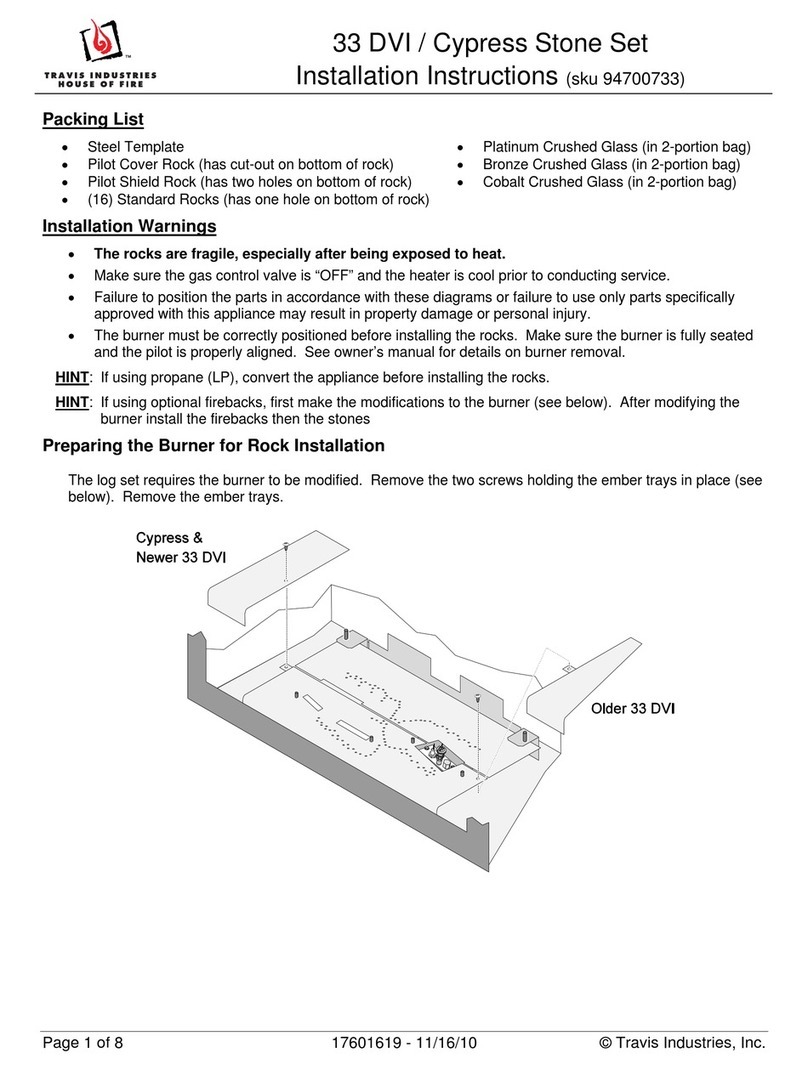
Travis Industries
Travis Industries 33 DVI installation instructions
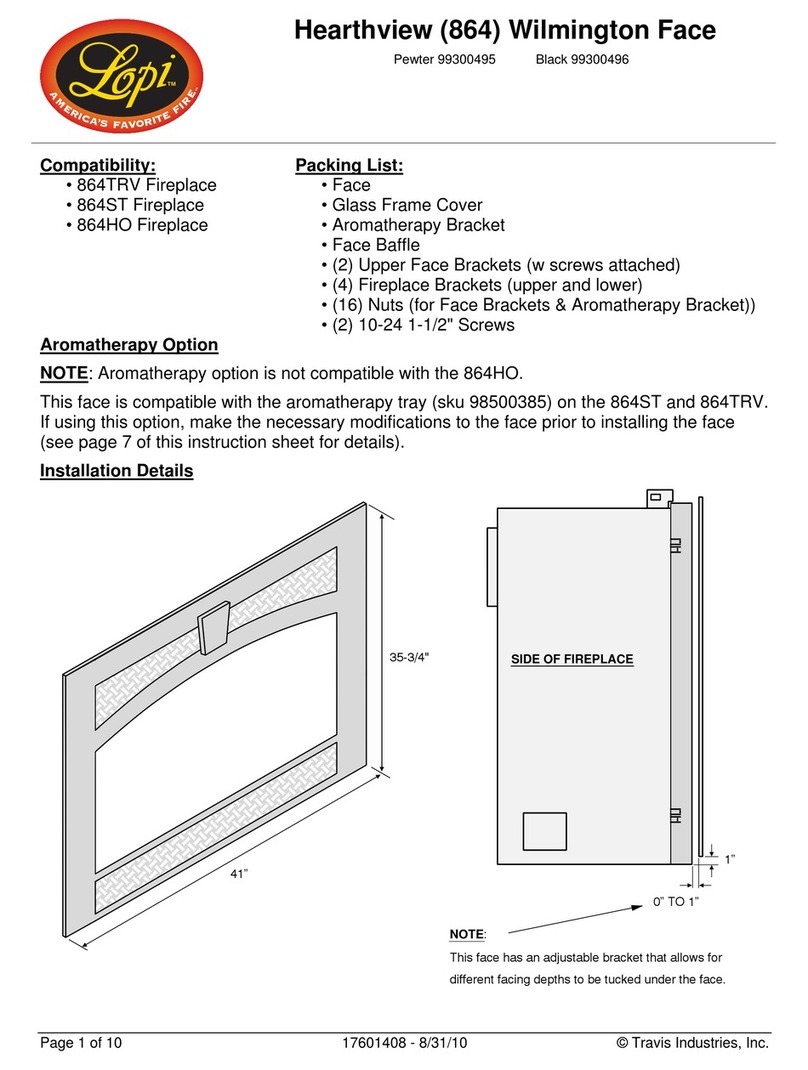
Lopi
Lopi Hearthview 864 user manual
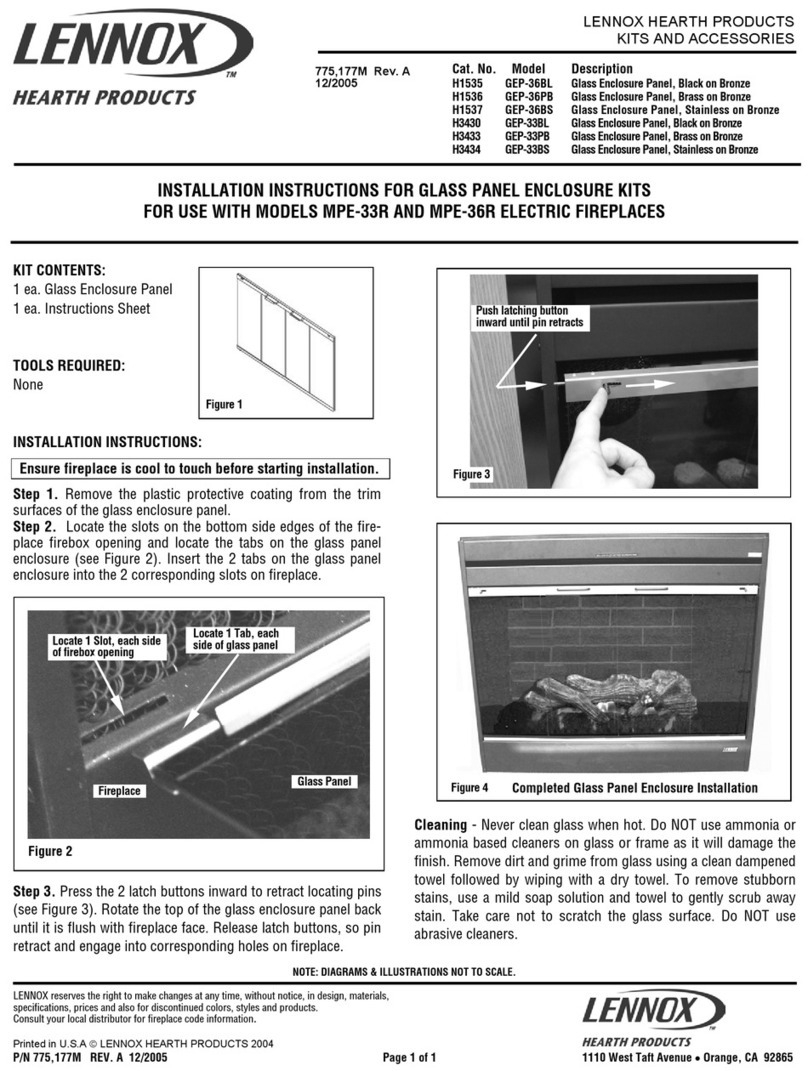
Lennox Hearth Products
Lennox Hearth Products LENNOX MPE-33R installation instructions
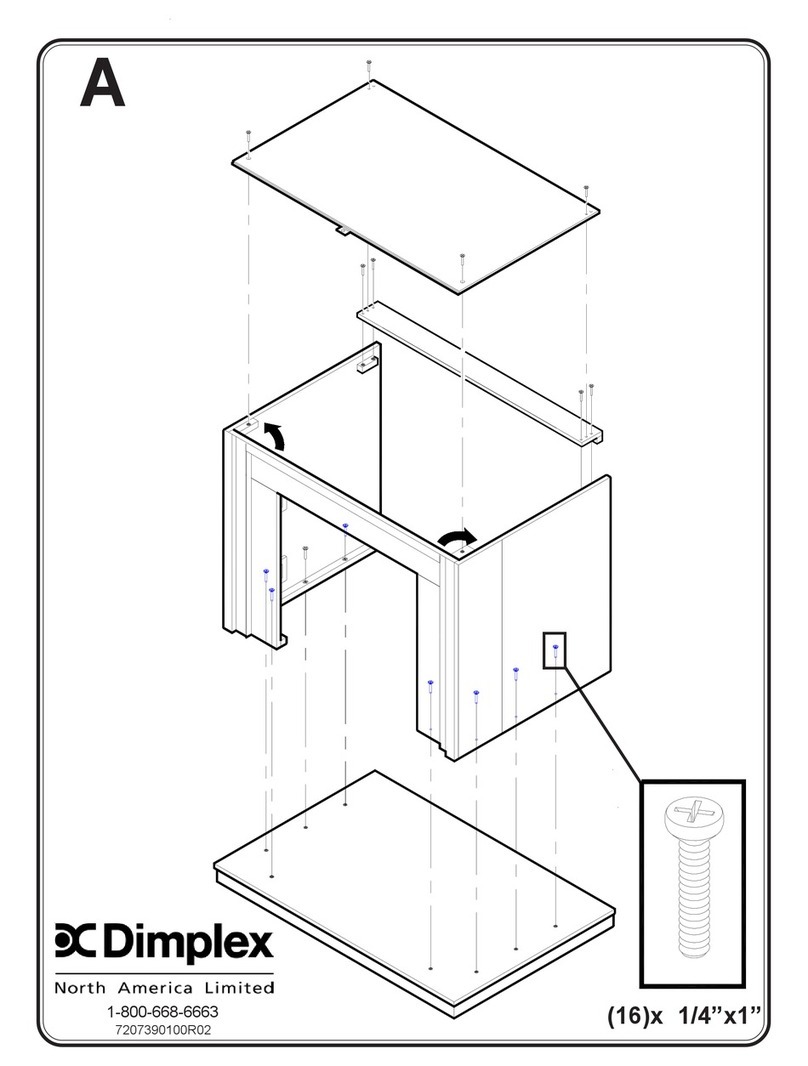
Dimplex
Dimplex DFP6776C install guide
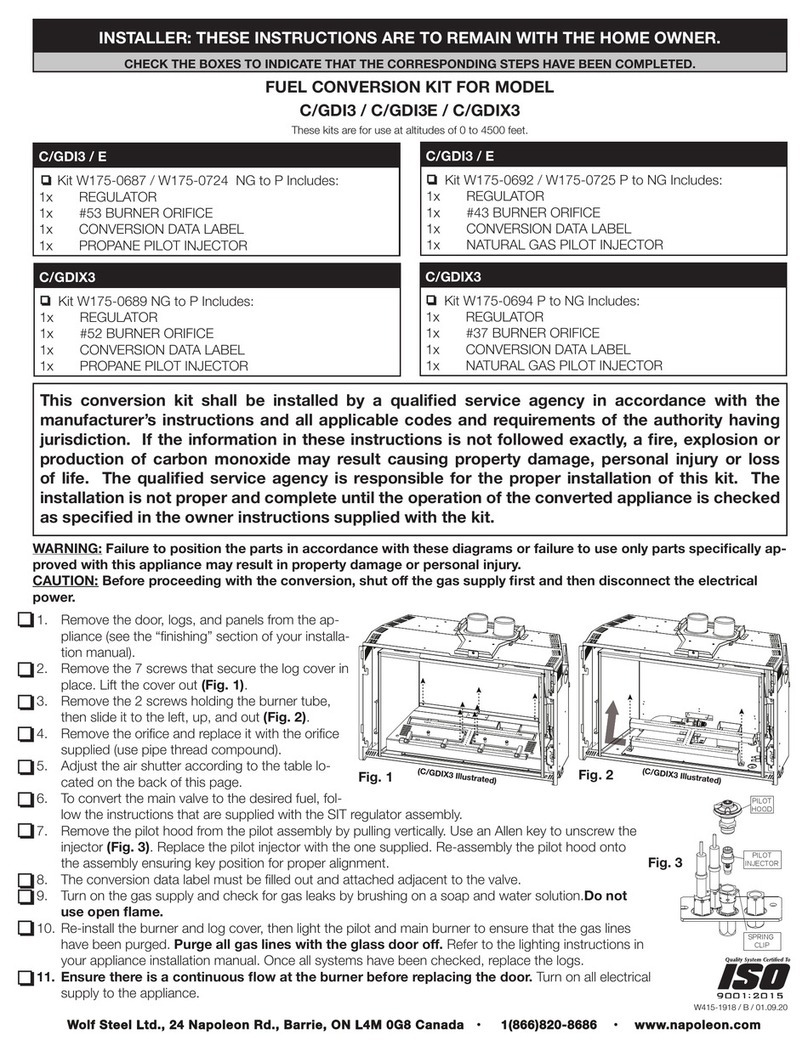
Napoleon
Napoleon W175-0689 instruction manual
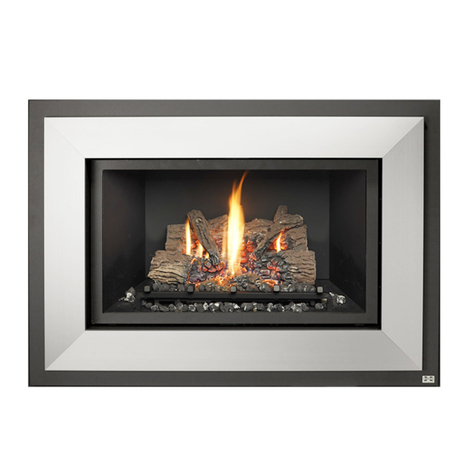
Travis Industries
Travis Industries 95400424 installation instructions
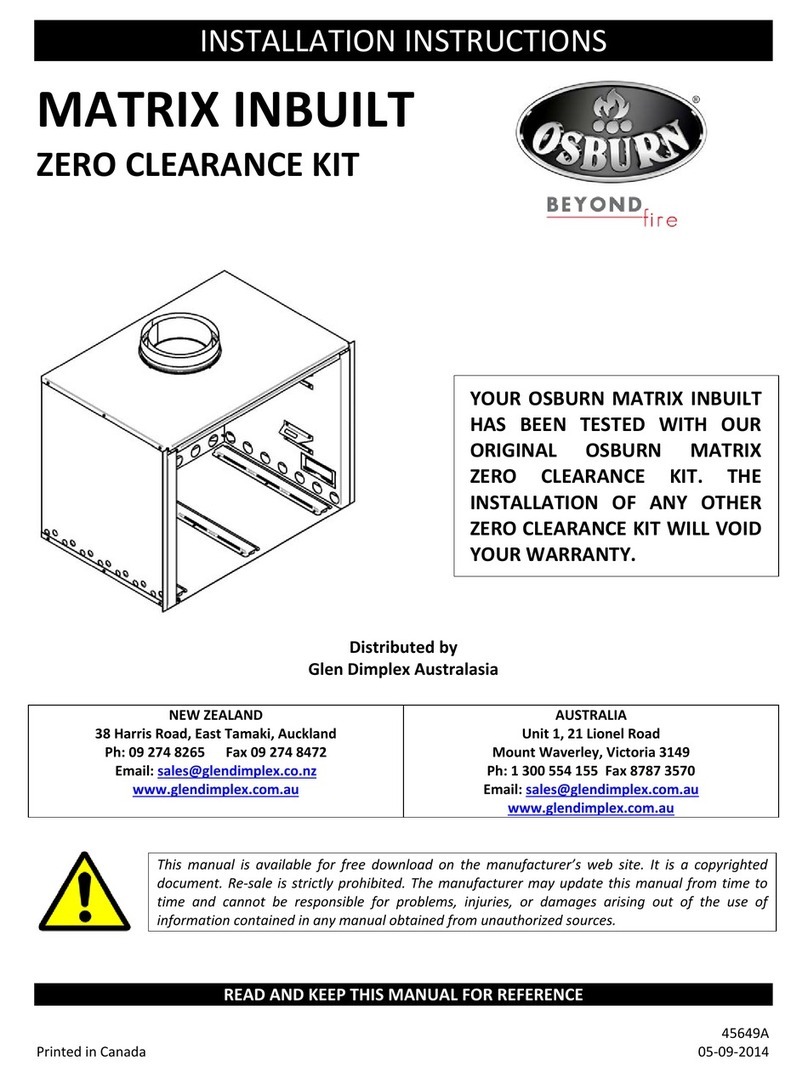
Osburn
Osburn ZERO CLEARANCE KIT installation instructions
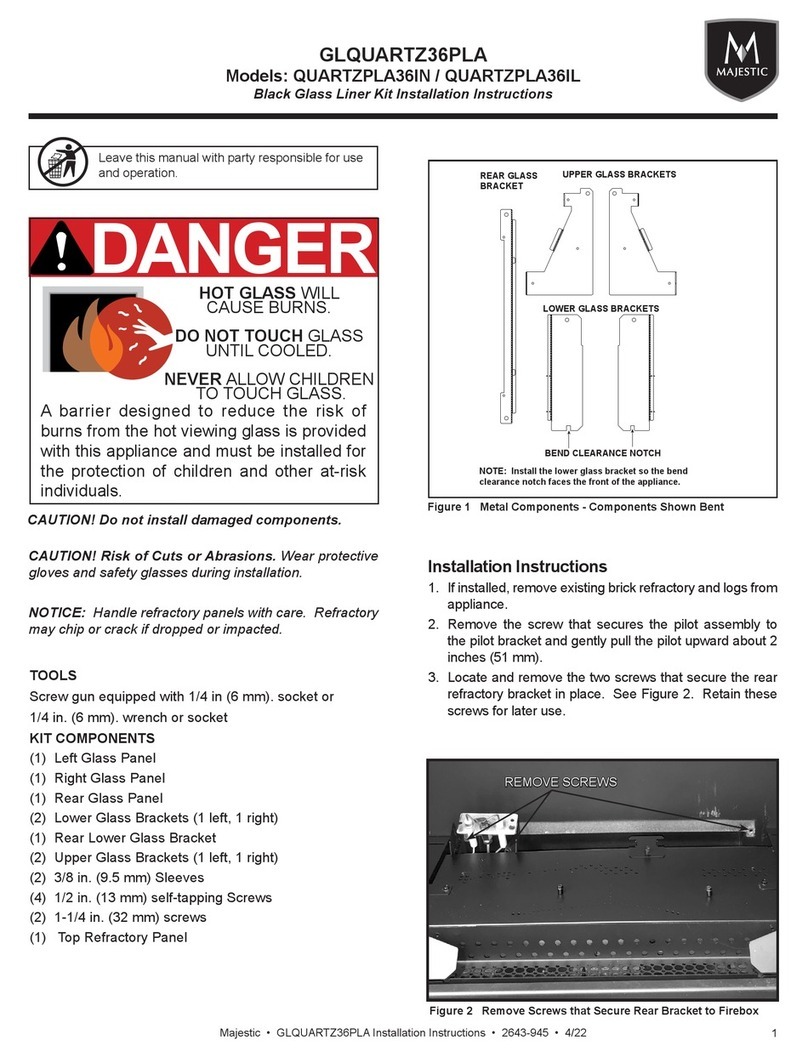
Majestic
Majestic QUARTZPLA36IN installation instructions
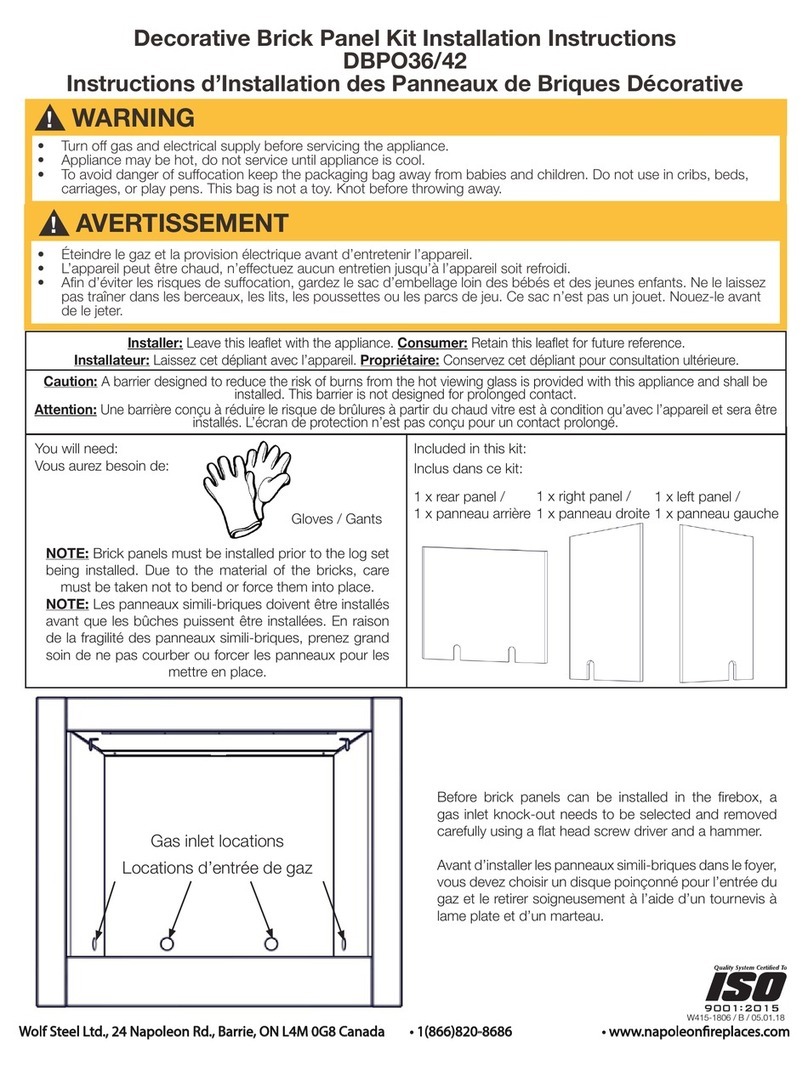
Napoleon
Napoleon DBPO36 installation instructions
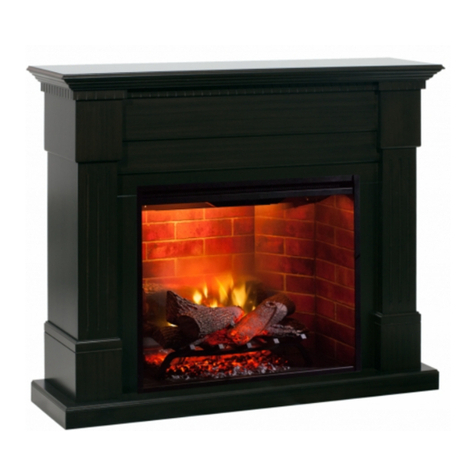
Dimplex
Dimplex SMP-130-E install guide
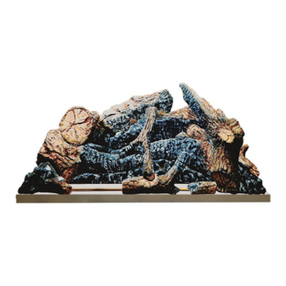
Empire Comfort Systems
Empire Comfort Systems LS50TINF installation instructions
